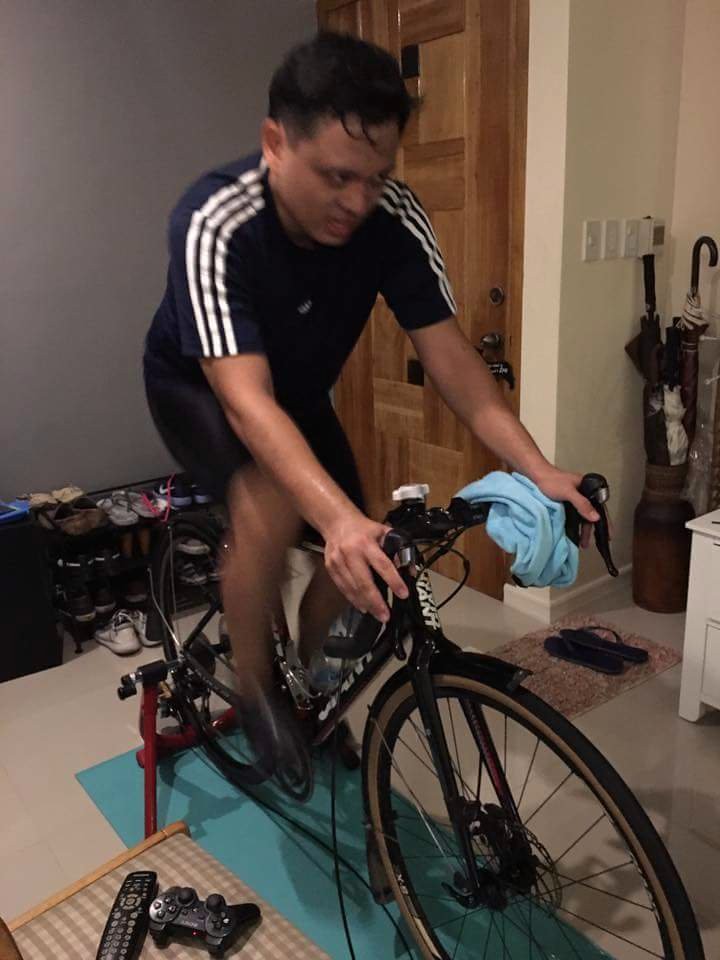Many who take indoor cycling seriously have gone toward Zwift. I don’t blame them; it’s a pretty good service that makes a competitive game out of the drudgery of indoor training. Unfortunately, a good Zwift training setup costs more than what I would like to shell out.

Due to one reason or another, I’ve had to put in my saddle time indoors more frequently. At home, my setup simply revolves around a smart TV or a PlayStation 3 with the YouTube client app installed, and it’s surprising how much the video-sharing service has in store for indoor cycling.
GCN (GLOBAL CYCLING NETWORK)
Famous for its regular stream of road cycling content, as well as its charismatic crew of presenters and guest hosts, GCN also sports a slew of indoor cycling training videos. They don’t publish as many of them, or do so frequently, but what they do have runs an impressive gamut. Many of their sessions revolve around high-intensity intervals, although they also have constant-effort sessions which vary the cadence and power.
What sets their videos apart is the presentation. Effort level is shown via a 10-point scale, where a 10 is the maximum you can put out. GCN scales the effort against time, as well, so they usually reserve 10/10 efforts for all-out sprints. Cadence, on the other hand, is shown via a circular metronome, where two yellow dashes spin around it at the cadence they recommend. This greatly helps people like me who don’t own a cyclocomputer with actual cadence measurement; just match the movement of the yellow dashes with your pedal strokes. Their sound guys have excellent taste in music, too.
GCN’s training videos fall under four general categories. The first of them sees the presenters inside the studio, along with guests, where they have one of the presenters (usually Simon Richardson or Matt Stephens, who left GCN in early 2018) as a leader giving direction via cues.
The second category is largely the same, still in studio and with a similar crew size of six, but with spin bikes and a non-presenter leader providing direction. These spinning sessions are all pretty challenging, and they take advantage of the multiple hand positions of a Spinning stationary bike, which are slightly different from those of a road bike’s drop handlebars.
Due to their tie-up with the Maratona dles Dolomites, a massive annual cyclosportive in the Alta Badia region of the Dolomite Alps of Italy, many of their training videos have onboard footage of presenters Simon Richardson or Daniel Lloyd riding the climbs of the region, such as the Passo Giau and Passo Falzarego. These make up the third category, and these mountain passes also figure in the route of the Maratona.
Lastly, GCN will sometimes tag along with a professional cycling team at a race, and do a training session with them too. Most of these infrequent videos are with Team Sky, but they’ve also teamed up with Team Mitchelton-Scott.
What GCN doesn’t offer is anything that lasts longer than an hour. While Dan and Matt construct very well-structured sessions that offer maximum pain/benefit for a given time, they don’t really believe in the value of sessions longer than 60 minutes. Also frustrating in some of their earlier videos is that the cadence metronome isn’t visible all the time.
CTXC
Outside their YouTube videos, I don’t really know much about CTXC. What I do know is that their training videos are pretty brutal, and they nicely fill in a gap which GCN is all but reluctant to address. In my experience, CTXC’s training videos are awesome for the times you want a workout to last longer than an hour…which is ideal for, say, the times when you wake up too late to join your Sunday morning long ride.
From what I can tell, CTXC is a moderately large cycling club based in Melbourne, Australia. Invariably, their videos are onboard footage of the club peloton, riding at high speed on Melbourne asphalt, while maintaining a rotating double paceline to share the effort. This is the meat and potatoes of CTXC’s workouts: they’re all designed to mimic the kind of fluctuating effort you need to pull off when you’re in a paceline, either wheel-sucking to conserve energy, or surging to take your pull in front. If you’re interested in making your indoor training emulate real-world efforts, their workouts are perfect.
CTXC’s training video library is fairly small, at just a dozen. That said, each one is made to a certain duration in mind, from 20 minutes all the way up to two hours.
Longer sessions exceeding an hour in length usually incorporate a climbing leg in the middle, sandwiched by flat paceline surge efforts at the beginning and end. Many of the climbing intervals encourage you to get out of the saddle and grind away continuously for five or six minutes. Conversely, the flat surges at the end tend to have reduced recovery time in between.
Visuals are more rudimentary compared to GCN’s. There is an effort level meter, but its scale goes up to 6 instead of 10. Warm-up and recovery intervals are rated a 3, while power-on intervals are either a 5 or 6. CTXC’s video editor does manage to nicely match up the power-on intervals with the onboard footage rider’s turn to pull at the front. If you want some form of cadence reference, you’ll just have to watch the peloton’s legs.
While there is no voice-over, there are instructional or inspirational messages that flash from time to time, such as “How’s your heart rate?” or “Keep it smooth.” This makes CTXC’s videos a little better if you want to use your own tunes; you can simply mute the audio and put your own music on, which I tend to do due to musical preference.
Because they are so brutal, I save CTXC’s videos as an occasional treat and a litmus test of my fitness. I would also recommend them for cyclists more experienced with judging effort by feel or with a heart rate monitor, because the prescribed effort level on the videos isn’t as granular or as newbie-friendly.

I personally use CTXC’s videos. I used their 30-minute workout and then the 90-minute workout when I got better.
YouTube is great and all but I personally like apps more. BKOOL is a nice app alternative to Zwift.
LikeLike